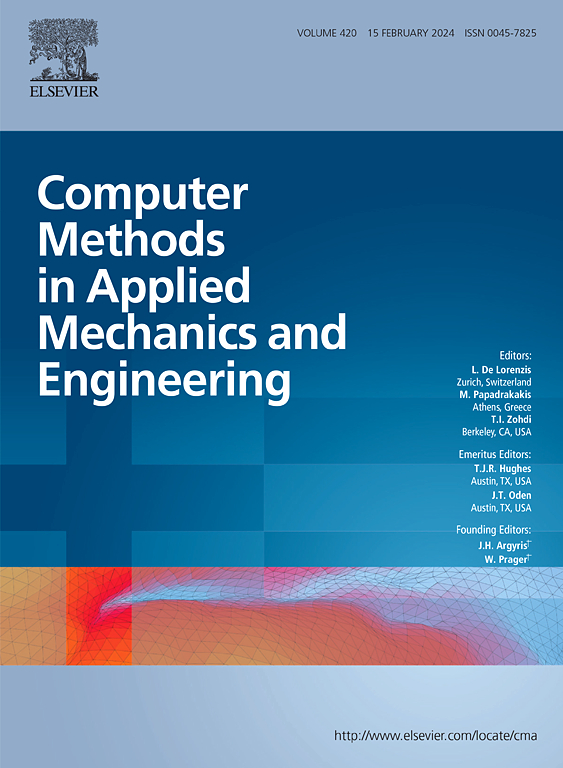Empirically corrected cluster cubature (E3C)
IF 6.9
1区 工程技术
Q1 ENGINEERING, MULTIDISCIPLINARY
Computer Methods in Applied Mechanics and Engineering
Pub Date : 2025-01-29
DOI:10.1016/j.cma.2025.117779
引用次数: 0
Abstract
In computational homogenization, the microscopic problem is regularly solved via Galerkin-projection methods to speed up the computation. By evaluating the involved integrals by hyper-reduction techniques, a very high efficiency can be achieved. Here, a novel hyper-reduction method is proposed and applied to magnetostatics. The method combines the ideas of microstructural clustering with the empirical identification/correction of a reduced set of integration points, not being taken from the set of finite element integration points. The results show that the macroscopic response (2D) is hardly distinguishable from the finite element results already for 12 integration points at a phase contrast of 1000 for a porous microstructure. The online costs (but also the offline costs) are thus found to be particularly low. Further, a two-scale example is discussed and the code is made available online.
求助全文
约1分钟内获得全文
求助全文
来源期刊
CiteScore
12.70
自引率
15.30%
发文量
719
审稿时长
44 days
期刊介绍:
Computer Methods in Applied Mechanics and Engineering stands as a cornerstone in the realm of computational science and engineering. With a history spanning over five decades, the journal has been a key platform for disseminating papers on advanced mathematical modeling and numerical solutions. Interdisciplinary in nature, these contributions encompass mechanics, mathematics, computer science, and various scientific disciplines. The journal welcomes a broad range of computational methods addressing the simulation, analysis, and design of complex physical problems, making it a vital resource for researchers in the field.

 求助内容:
求助内容: 应助结果提醒方式:
应助结果提醒方式:


